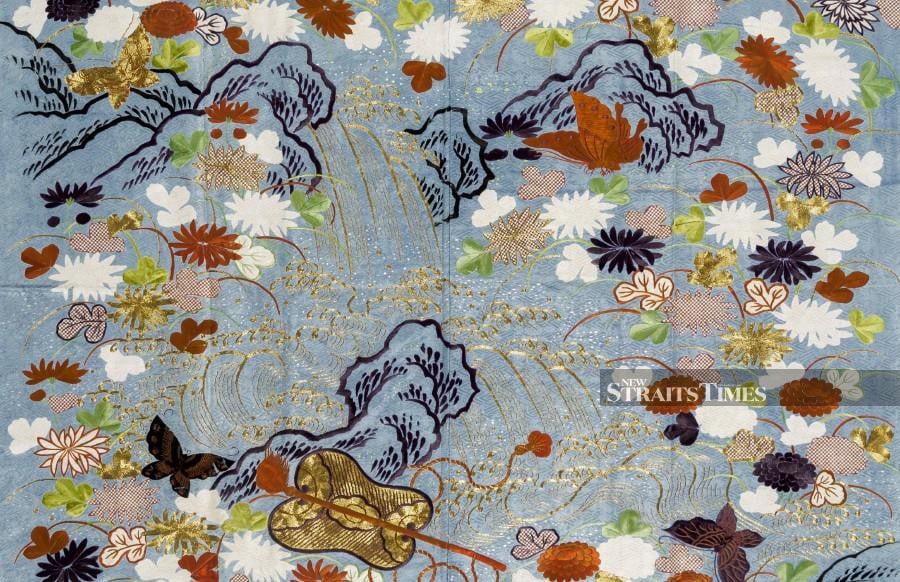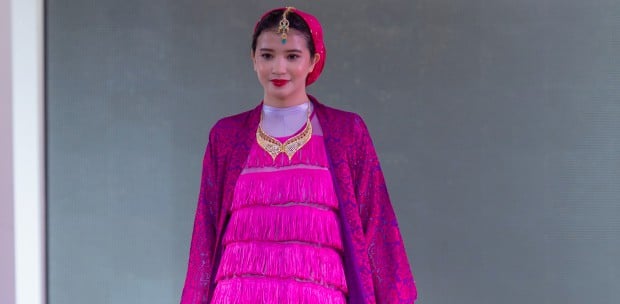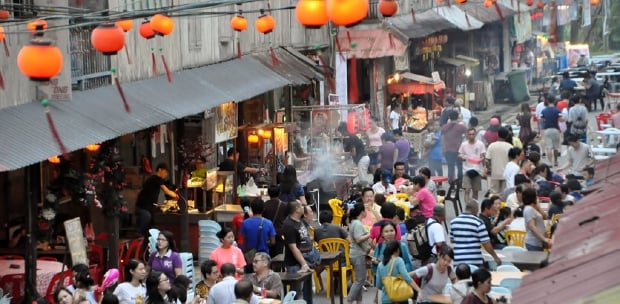IN the fabric of human interaction, few acts resonate as profoundly as giving a gift. It's a universal language, spanning across cultures and generations, speaking volumes of our bonds and shared experiences.
Every gift, whether big or small, tells a story. It's a way of saying thank you, showing love or marking a special moment. And in doing so, it brings us closer together, reminding us of our shared experiences and connections as human beings.
Spotlighting cross-cultural connections in Asia, Singapore's Asian Civilisations Museum (ACM) and Peranakan Museum is presenting an exhibition titled "Fukusa: Japanese Gift Covers from the Chris Hall Collection."
The first special exhibition at the revitalised Peranakan Museum since its re-opening in February last year, it explores the act of gifting — a deeply ingrained practice taking many forms across histories and cultures — through Japanese silk gift covers called fukusa, which were used to present formal gifts from the 18th to early 20th century.
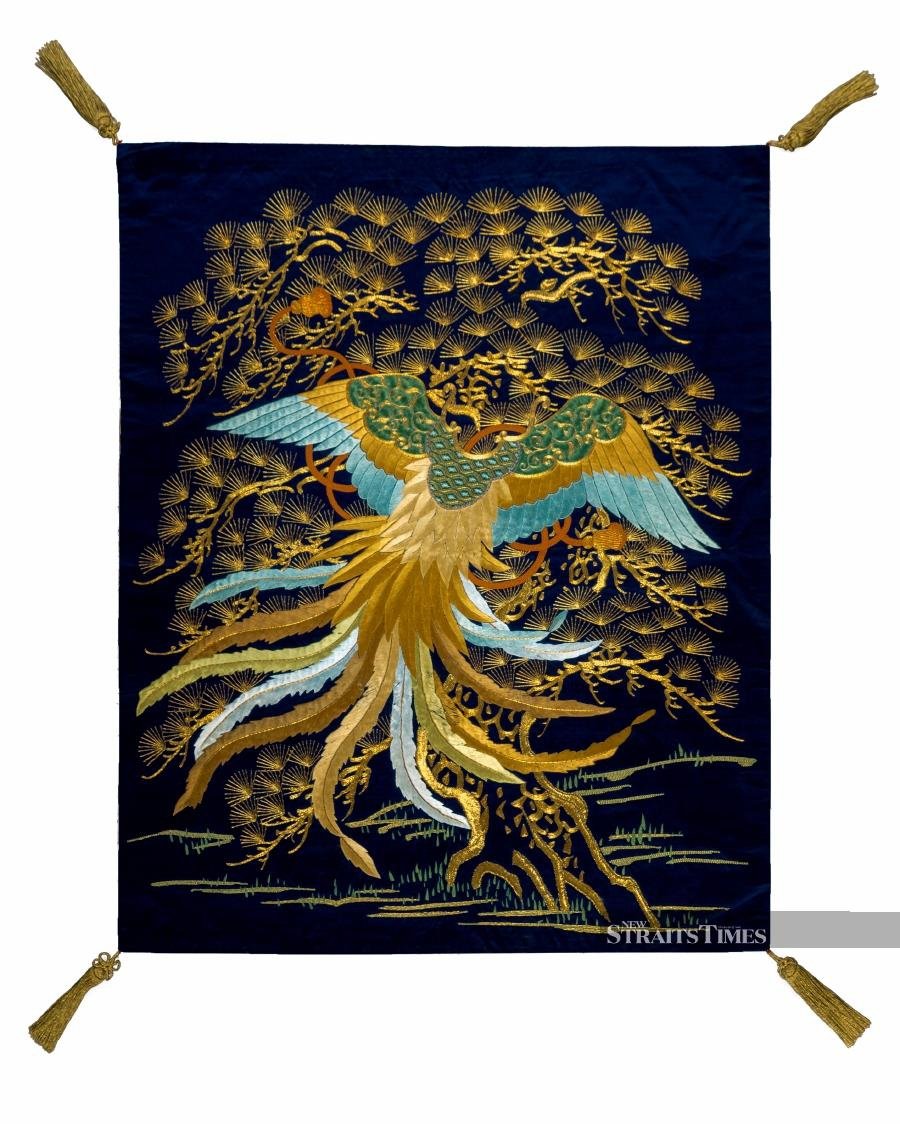
Diving into the heart of Japanese customs, the exhibition unveils over 80 fukusa, kimonos and related textiles, donated by Hong Kong-based collector Chris Hall, renowned for his unparalleled collection of Asian textiles. Each piece whispers tales of craftsmanship, trade and the timeless art of gifting.
Reflecting on the exhibition's significance, Kennie Ting, director of ACM and Peranakan Museum, remarks: "Fukusa: Japanese Gift Covers from the Chris Hall Collection is our first special exhibition at the new Peranakan Museum, which re-opened last year. This is a nod to the building's heritage — the ACM first opened in the former Tao Nan School in 1997, before moving to Empress Place in 2003."
Continuing, he shares: "When Peranakan Museum first opened in 2008, it also played host to ACM exhibitions not necessarily Peranakan in nature. Our intent moving forward is for Peranakan Museum to host intimate, jewel-like, genre-specific exhibitions of Asian art and heritage, alongside Peranakan-themed special exhibitions."
Adding, Ting says: "This exhibition honours Chris Hall's incredibly generous gift of almost 100 pieces of Japanese textiles to the ACM. The gift and exhibition mark the continuation of a longstanding relationship with Hall, from the time when ACM was housed in the Tao Nan School building."
JOURNEY THROUGH TRADITION
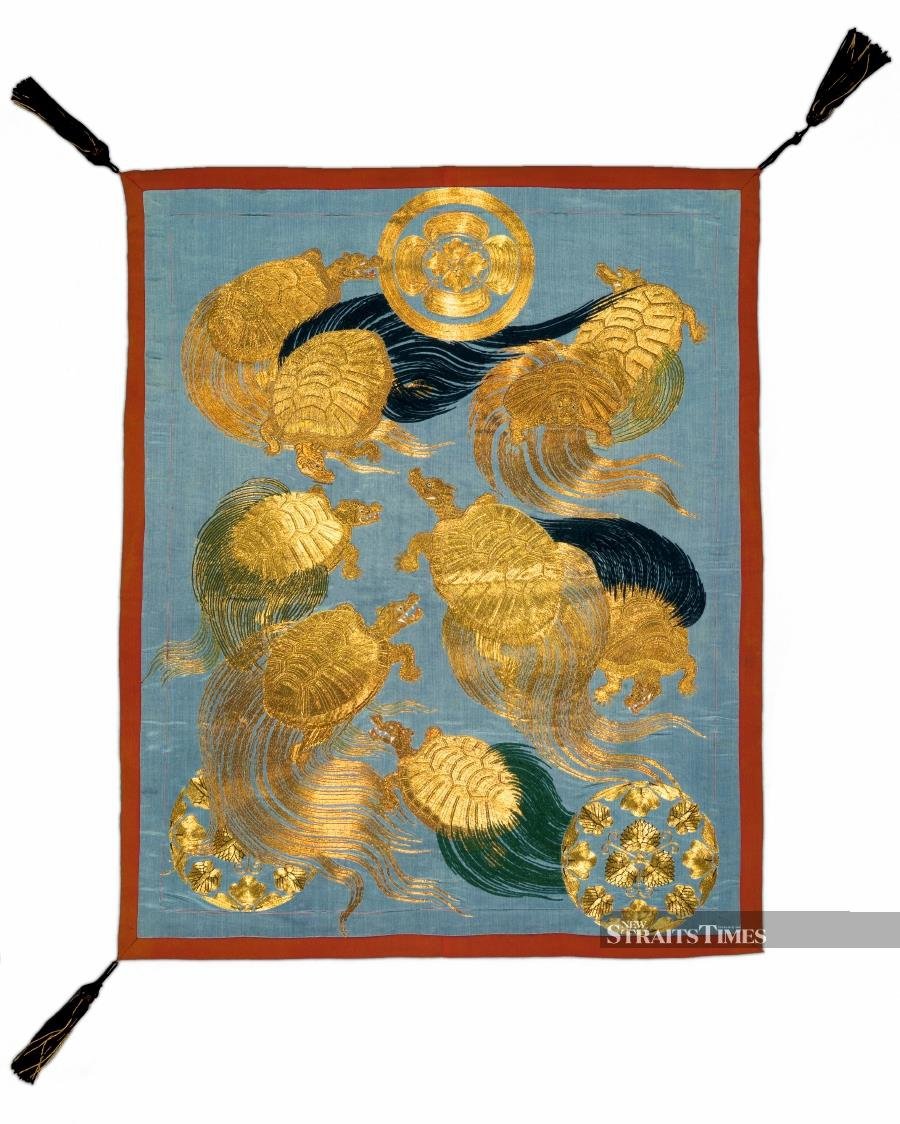
Originating in the illustrious Edo period (1603–1868), fukusa emerged as a symbol of prestige, gracing ceremonies of the ruling warrior-class and nobility. Evolving over time, these exquisite covers transcended social boundaries, becoming a hallmark of sophistication and identity among the elite echelons of Japanese society.
As with fashion, fukusa asserted the taste, wealth and identity of their owners, and sometimes mirrored designs from stylish garments. The second section of the exhibition charts the similarities between fukusa and fashion through designs, materials and techniques, and examines how the politics of dress intersected with fukusa design in the late Edo period.
Fukusa can be likened to modern greeting cards. They're adorned with designs appropriate for a wide variety of occasions, from annual seasonal festivities to important personal milestones.
The third section of the exhibition unpacks the different sentiments conveyed through fukusa. They feature a variety of auspicious symbolic motifs and pictorial allusions, such as lobsters, origami butterflies, cranes and turtles.
Fukusa also played an important role in establishing cultural literacy. A gift was only considered successful when the recipient understood the meaning behind the design.
As such, the techniques and designs employed to convey messages reflected the creative ingenuity of both maker and patron. The ability to decode these messages was a statement of taste, sophistication and cultural sensitivity.
FROM TRADITION TO GLOBAL FASCINATION
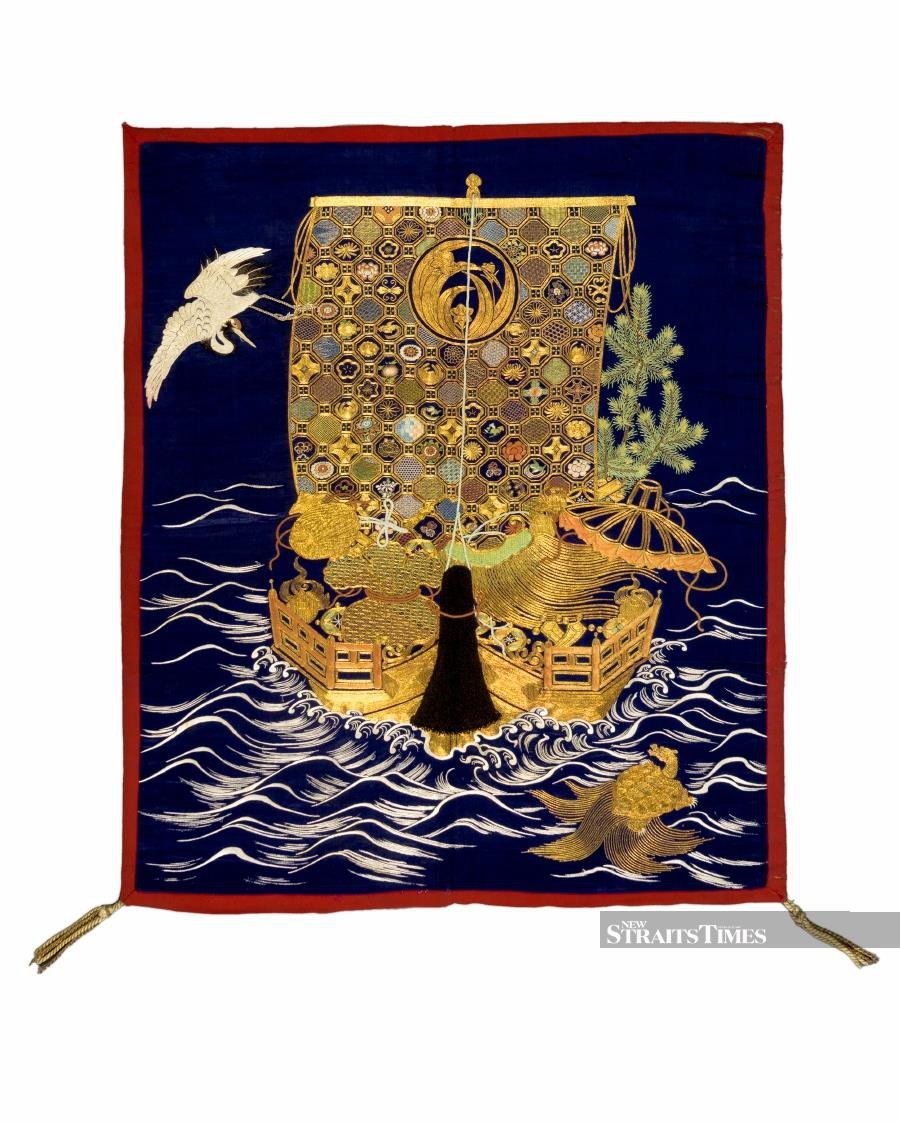
In the mid-19th century, Japan's ports were opened to trade with the West. Rapid industrialisation and modernisation became a national priority. The fourth section of the exhibition charts how fukusa were transformed from luxury items largely unknown outside of Japan to a popular commodity, fuelled by the Western fascination with Japonisme. This section explores the impact of fukusa on Western art and global perceptions of Japan.
Visitors will also discover how local merchants and craftsmen responded to this new demand by creating new fukusa for export. Initiatives to industrialise Japan introduced new ideas and technologies from the west, which revolutionised textile production and changed the ways fukusa were made.
UNIVERSAL LANGUAGE OF GIFT-GIVING

As the exhibition draws to a close, it invites visitors to reflect on the universal language of gift-giving, transcending cultural boundaries and echoing across generations. From vibrant cloths adorning Peranakan altars to intricate tray covers exchanged in wedding rituals, the exhibition celebrates the shared artistic heritage between Japan and the rest of Asia, weaving a tapestry of interconnectedness and cultural resonance.
In conjunction with the exhibition, a Weekend Festival awaits, offering immersive workshops, captivating demonstrations, and engaging activities.
Monthly curator-led tours provide an intimate glimpse into the intricacies of fukusa, while interactive experiences beckon visitors to personalise their own fukusa, infusing it with special meaning. From tactile explorations in the Exploration Zone to spirited engagement with local craft practitioners, the exhibition promises a captivating journey through the art of gift-giving.
Fukusa: Japanese Gift Covers from the Chris Hall Collection ends on Aug 25. For more info, visit www.nhb.gov.sg/peranakanmuseum/


